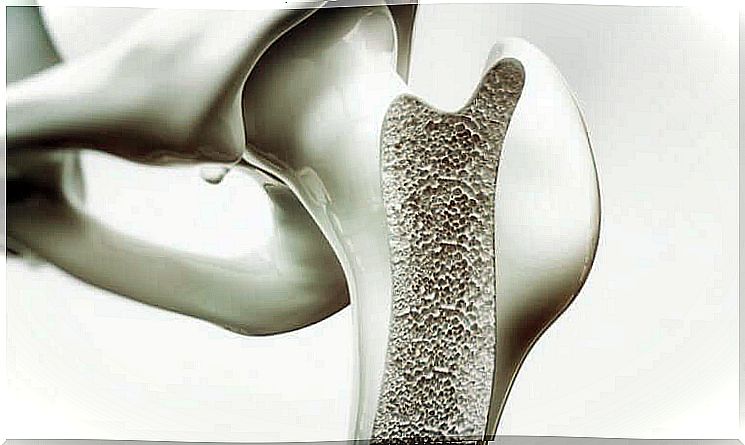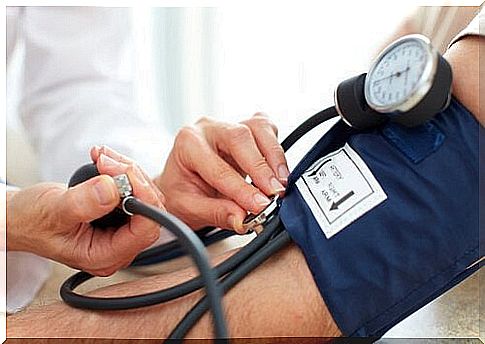Corticosteroids: What They Are And What They Are For

Corticosteroids are very powerful drugs that can only be given with a doctor’s prescription. For this reason, although many people think they are over-the-counter medicines, they cannot be taken or bought without medical consent.
In today’s article, we will talk about corticosteroids , their pharmacological action and the possible adverse reactions caused by their consumption.
These drugs derive from certain hormones that belong to the steroid group, produced by the cortex of the adrenal glands. Corticosteroids are involved in a large number of physiological mechanisms, among which we can mention inflammatory processes, immune system activity and carbohydrate metabolism.
Corticosteroid drugs are artificially synthesized for therapeutic purposes to treat diseases such as Crohn’s disease or to treat joint pain.
Types and indications of corticosteroid drugs

Since these drugs can be artificially synthesized, it is possible to create different medicinal forms, used to treat different diseases. We can distinguish 4 different types of administration:
1. By inhalation
Inhaled corticosteroids are used when treating a patient with asthma or chronic obstructive pulmonary disease (COPD).
However, they are also used punctually in some cases of acute bronchitis, although the previous therapeutic indications are aimed at long-term treatments or under medical supervision.
2. Orally
Orally administered corticosteroids come in tablet form. These drugs are mainly indicated for the treatment of inflammatory diseases, such as Crohn’s disease or ulcerative colitis.
3. Topically
Corticosteroids in cream are especially prescribed for eczema, atopic dermatitis or psoriasis. Local inflammations represent another case in which these drugs can be administered topically.
4. Intravenously
Finally, injectable corticosteroids are also found. These are administered intravenously and to treat some systemic autoimmune diseases.
As for intramuscular administration, it is usually prescribed for the treatment of joint pain.
Mechanism of action and pharmacological effects of corticosteroids

Once circulating in the body, the active ingredient in these drugs enters the cell’s cytoplasm, where it joins some receptors. After forming this hormone-receptor complex, it makes its way to the cell nucleus, where it interacts with DNA.
The result of this interaction is the synthesis of the specific protein that will be responsible for carrying out the desired function.
As we said at the beginning of the article, corticosteroids perform many functions in the body. Below we explain each of them in detail:
- Metabolism of carbohydrates and proteins : they stimulate glucogenesis, or the formation of glucose. It increases the levels of glucose and pyruvic acid in the blood, it also makes the balance between nitrogen and calcium negative, which is why it can trigger osteoporosis or myopathies.
- Water and electrolyte metabolism : retain sodium and water, but facilitate the excretion of potassium and hydrogen, reducing intestinal absorption of calcium.
- Cardiovascular actions : retain fluids in the body, facilitating the appearance of edema.
- Hematopoietic actions
- Anti-inflammatory action: they calm the so-called Celsus tetrad – rubor, calor, tumor, dolor -, that is redness, heat, edema and pain. In addition to that, they inhibit the secretion of histamine.
Adverse reactions to corticosteroid drugs

Being drugs that act on a large number of physiological processes, the undesirable effects of corticosteroids can also be very different.
It should be emphasized that their side effects are closely related to their use. Their main cause is in fact the inadequate intake of the drug or the abrupt interruption of treatment.
As for the immunological effects, the susceptibility to infections increases, being immunosuppressive agents. Side effects of these drugs can also affect skeletal muscles, causing myopathies, osteoporosis or bone necrosis.
Serious gastrointestinal effects may also occur, such as pancreatitis or peptic ulcer, which are two fairly common adverse reactions resulting from the use of corticosteroids. At the cardiovascular level they can produce hypertension due to water retention. And again we remember acne, hirsutism, stretch marks and bruising.
Mood swings, feelings of euphoria, insomnia, depression and psychosis are among the neuropsychiatric adverse reactions that can occur during treatment with corticosteroids. The latter, however, are less frequent and less likely.
Some vision problems may also appear, such as cataracts and glaucoma, as well as endocrine or metabolic problems. Among the latter we can mention glucose intolerance, diabetes, overweight, hyperlipidemia and suppression of the hypothalamus-pituitary-adrenal glands axis.
Finally, a slowdown in growth could be observed, caused by the close relationship of the active ingredient with growth hormone.









